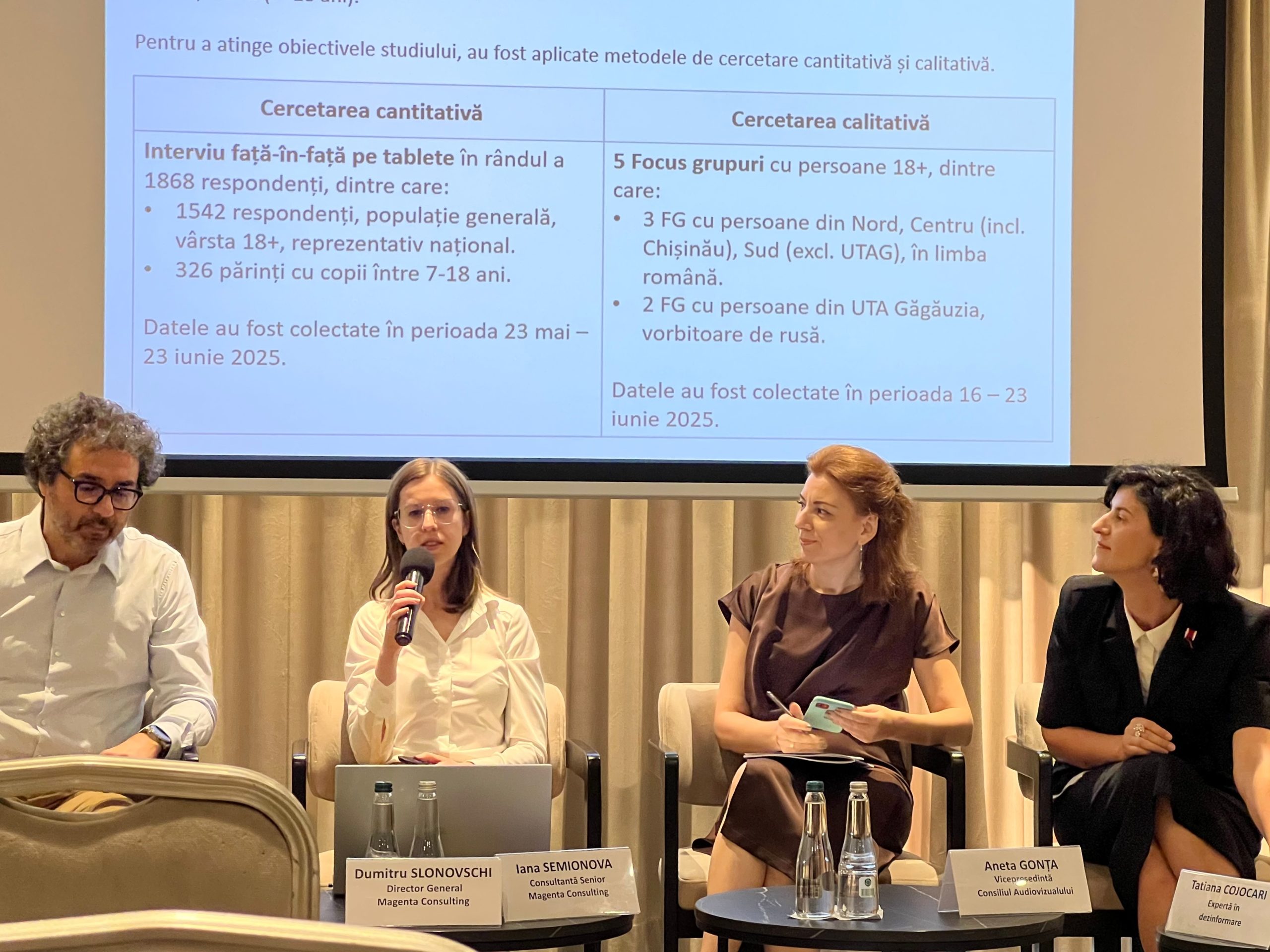Mihaela Ciobanu
News is among the most popular types of media content among citizens of the Republic of Moldova, with 56% of respondents consuming it frequently, according to a new study on the media literacy of the population conducted by the Council of Europe. At the same time, the research shows that more than half of citizens consider themselves well informed about events in the country, but the level of information varies significantly depending on education, economic situation, and language spoken.
According to the survey, Moldovans’ top preferences are news, followed by movies (45%), music (concerts or videos – 36%), and health and medicine content (30%). The programs with the highest share of viewers who trust them are “Vorbește Moldova” with Natalia Cheptene (35%), followed by “Ora de Ras” with Anatol Durbală (28%) and “O Seară Perfectă” with Anișoara Loghin (26%).
Regarding the level of information and interest in the media, the data indicate that more than half (56%) of citizens consider themselves well informed about events in the Republic of Moldova, while 44% say they are poorly informed. The perceived level of information increases with the level of education and the economic situation of households. Thus, 33% of people with secondary education consider themselves informed, compared to 77% of those with higher education. At the same time, 69% of households that manage to save money say they are well informed, compared to only 44% of those facing serious financial difficulties.
There are also differences depending on the language spoken. People who self-identify as “Moldovan” speakers tend to say they are less informed and less interested in events in the country (39%) compared to Russian (59%) or Romanian (68%) speakers.
“We have a serious challenge in this regard. Our situation in the field of media literacy is very complicated and challenging, and what the academic environment has managed to achieve through the media literacy course at the Independent Journalism Center (IJC) — those elements of media literacy that teachers try to apply not only to this course, which is optional, but also to other disciplines — I think it is still very little,” said Liliana Nicolaescu-Onofrei, chair of the Parliament’s Committee on Culture, Education, Research, Youth, Sports, and Media, at the study’s launch event.
At the same time, the authors of the study emphasize that half of the respondents (50%) admit that they follow the news but are not sure which sources are independent. 31% of them say they get their information from both independent and other sources, and 15% say they get their information exclusively from independent sources.
Regarding the perception of fake news, almost all (96%) citizens agree with the statement that it is important for Moldovan citizens to be able to distinguish between accurate information and material intended to manipulate or misinform citizens. 59% of the general population consider it easy to identify whether a source of information is attempting to present falsehoods or manipulate opinion, while 40% say they find this difficult.
At the event, Shahin Abbasov from the Council of Europe mentioned that combating disinformation, which increasingly poses a threat to the national security of countries across the continent and around the world, as well as increasing media literacy, have been among the CoE’s main priorities in recent years. “Interestingly, until now, most efforts to combat the complex phenomenon of disinformation have focused on the so-called supply side – that is, anticipating and dismantling disinformation, regulatory responses, technical measures to detect and counter disinformation campaigns. However, there is also a so-called demand side to the disinformation challenge, and this has not been addressed in a comprehensive and systematic way until now,” he pointed out.
The authors of the study recommend strengthening a more resilient and balanced information space in the Republic of Moldova through four main directions: improving the supply of media content, restoring trust through strategic communication, developing citizens’ media skills, and supporting quality journalism.
